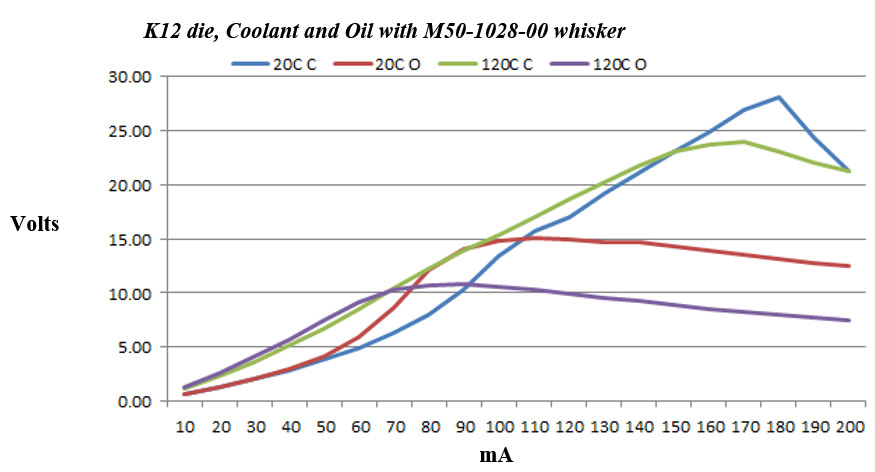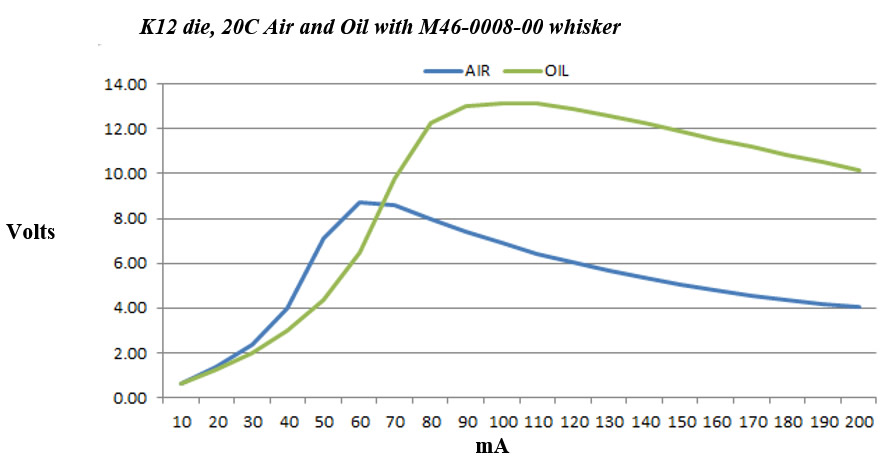ISG Fluid Level Sensor
Products
Temperature of the Fluid Being Sensed
The ability of a fluid to wick away heat is what makes these sensors work. For a given fluid, as the temperature of the fluid increases, it also raises the internal temperature of the die, so that the sensor will not be able to withstand as high a voltage as it did when cool. If the fluid is hot, it won’t take as much extra heating to overwhelm the sensor’s ability to withstand a higher voltage, so the hotter the fluid, the lower the withstanding voltage.

Minimum voltage in order for a sensor to function
In order for a die to be heated sufficiently to drop its internal resistance enough, there must be an adequate amount of current flowed through it (Ohm’s Law: P=I2*R). In order to develop that current, there must be enough voltage across the die to reach that peak point. This is the turn on voltage. The amount of heatsinking the die experiences can move that point: thicker whisker, less viscous fluid, cooler fluid, and some manufacturing issues with the solder joint to the cup. Refer to graph below: minimum turn on voltage is that maximum voltage peak of the AIR curve. Once the die crests the peak, then the sensor will reduce its resistance as it heats up, dropping the voltage across it. Note that changing the whisker or addition of a PCBA will affect this value.
Maximum voltage a sensor will withstand before false trigger
Since the die responds to internal heat and the internal heat and is a function of both the external heat as well as the current flowing through the die, then it is possible to drive a sensor into a false failure mode by either exceeding the environmental temperature or overdriving the sensor input voltage even when the sensor is bathed in fluid. This is the maximum withstanding voltage. As the environmental temperature increases, so does the internal heat of the die, thus it will take less current flowing through the die to raise its internal temperature to the point at which it starts to drop its resistance and the sensor now reports it is out of fluid, even if it is still in fluid. This point can be modified by changing the fluid type (viscosity), fluid temperature or whisker. Refer to graph below: maximum withstanding voltage is that maximum voltage peak of the fluid (COOL or OIL) curve. Once the die crests the peak, then the sensor will reduce its resistance as it heats up, dropping the voltage across it. Note that changing the whisker or addition of a PCBA will affect this value.

